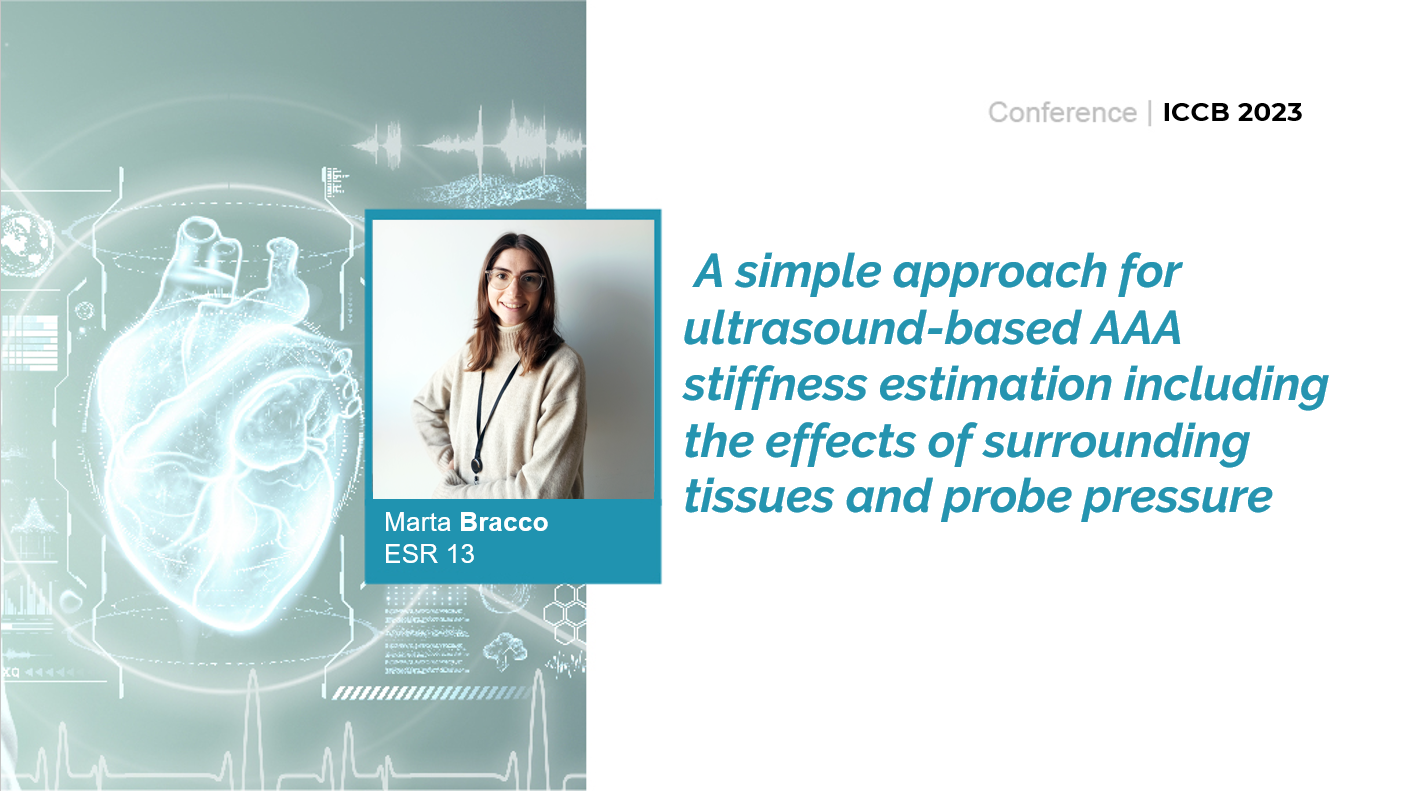The MeDiTATe project at the X International Conference on Computational Bioengineering (ICCB 2023)

The MeDiTATe project will be present at the ICCB 2023. The event will be held on the 20 – 22 September 2023 in Vienna (Austria) and will be hosted by the Institute for Mechanics of Materials and Structures of Technische Universität Wien (TU Wien).
In this occasion Marta Bracco, ESR 13 of the MeDiTATe project will present the results of her activities with a presentation whose title is “A simple approach for ultrasound-based AAA stiffness estimation including the effects of surrounding tissues and probe pressure”.
An abstract describing the work is reported hereinafter: “Clinical decision making for abdominal aortic aneurysm (AAA) treatment is based on the measurement of the maximum diameter from medical images (Wanhainen et al., 2019). However, the diameter alone has shown a limited ability to correctly predict the risk of rupture, which in turn can negatively affect the patient’s survival rate (Vorp, 2007). Biomechanics-based indexes have proven better predictive ability, but they have not yet found practical application in clinical context (Polzer et al., 2020). In vivo non-invasive estimations of AAA tissue properties can help to achieve clinical translation. Methods based on time-resolved ultrasound (US) were proposed, being ultrasound the most commonly employed imaging technique for AAA monitoring (Van Disseldorp et al., 2016) and should take into account the effect of surrounding tissues (Petterson et al., 2019). It was also noticed that US scanning procedure itself introduces an external force applied to the AAA via the transducer push, causing deformations in the aortic wall (Ghulam et al., 2022). In this work, we propose to correct the AAA material properties estimation by means of a multi-factorial correction coefficient, taking into account the geometry, the surrounding tissues and the probe pressure thanks to finite element modelling. Three patient specific geometries of AAA and surrounding tissues were obtained from clinical images via segmentation. Specifically, the soft tissues surrounding the spine up to the patient surface were simplified as a homogeneous material. The spine geometry was subtracted from the soft tissues and it was modelled as a boundary condition, fixating the internal surface created by the cut. Through this approach, both the effect of the hard and soft surrounding tissues was considered. The AAA wall was modelled as orthotropic linear elastic material as in Perrin et al., 2015, while the surrounding tissues were modelled as hyperelastic neo-hookean materials as in Petterson et al., 2019, and the value of shear stress was obtained by calibrating the simulation according to the data presented in Ghulam et al., 2022. The inner wall of the AAA was subjected to patient-specific blood pressure and the outer wall was tied to the surrounding tissues. We also applied a localized uniform firm pressure of 13.85 kPa (value from Ghulam et al., 2022) on the outer surface of the patient in the antero-posterior direction. The stiffness of the AAA wall was then calculated as the ratio between the hoop stress, calculated with the Laplace relationship, and the hoop strain. The effect of geometry was quantified by comparing the results for the pressurized patient specific AAA geometry to an idealized case, i.e. a pressurized thin walled cylinder, obtaining the first correction factor μ𝐺. Progressively adding complexity, we obtained two more correction factors μ𝑆𝑇 and μ𝑃𝑃 respectively correcting for the presence of surrounding tissues and probe pressure. We found the correction factors to be consistent across patients: μ𝐺= 0.70 (0.042),μ𝑆𝑇=2.01 (0.002), μ𝑃𝑃=1.14 (0.025). μ𝐺= 0.70 (0.042), μ𝑆𝑇=2.01 (0.002), μ𝑃𝑃=1.14 (0.025). We conclude that the presented method is a promising and simple approach to account for the different factors affecting US-based biomechanical estimations.”.
